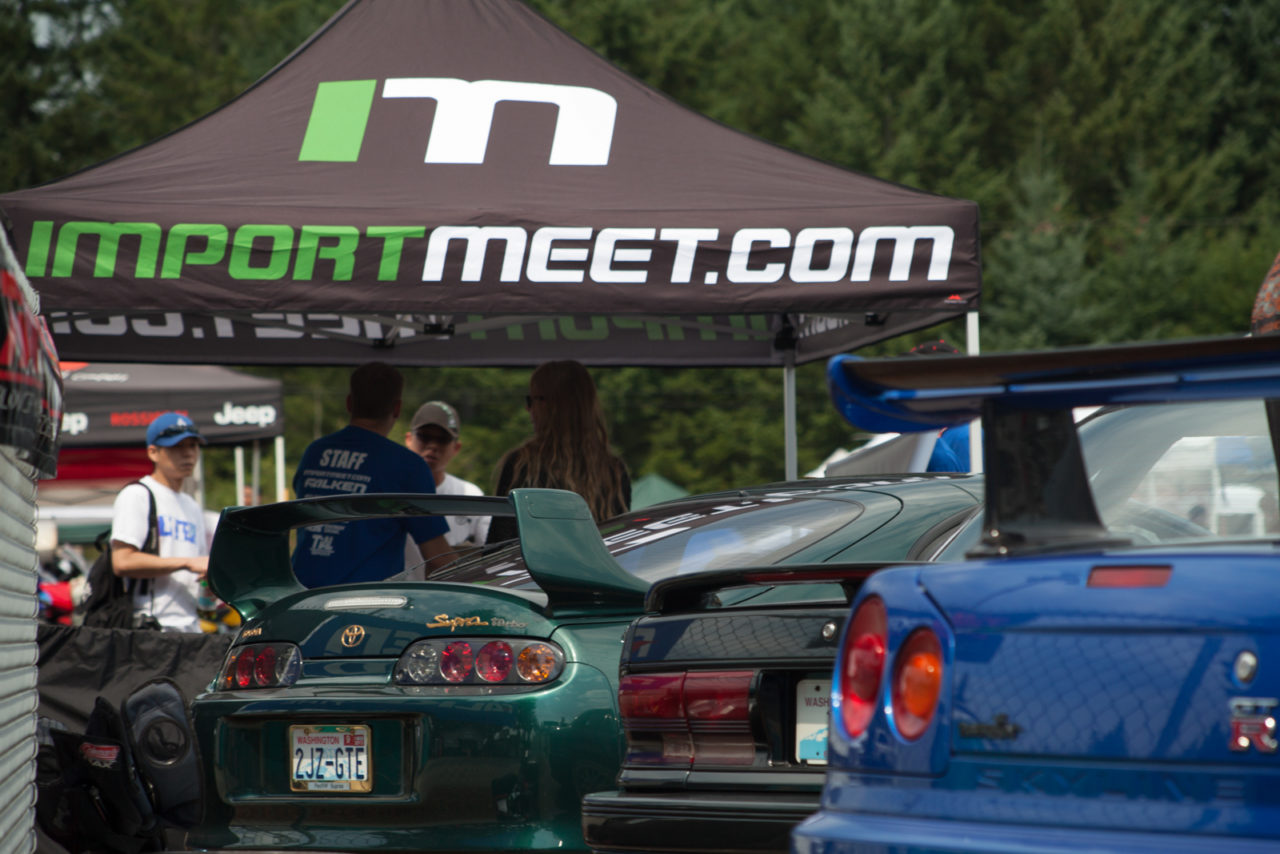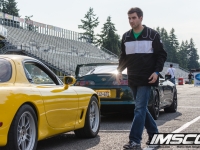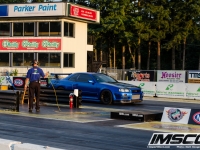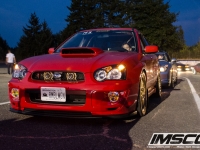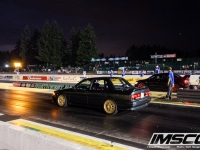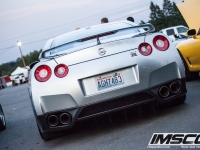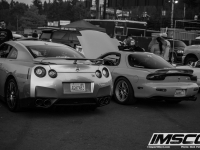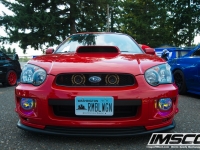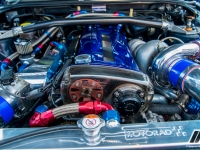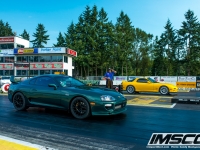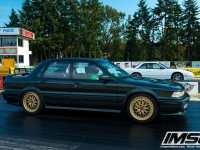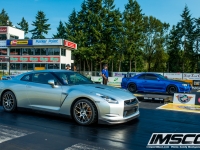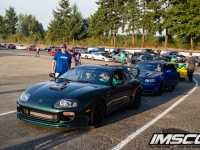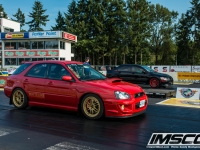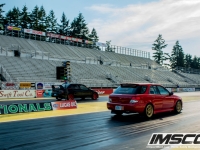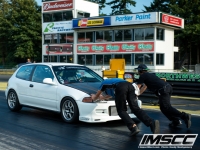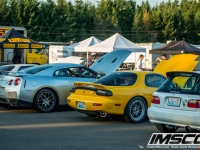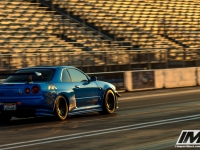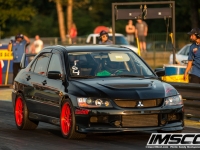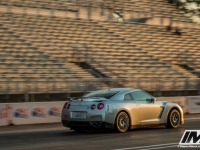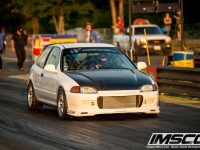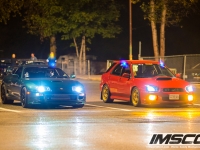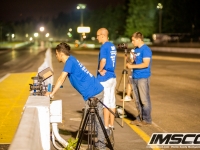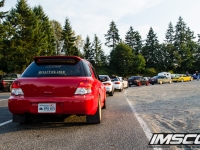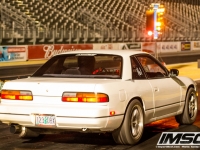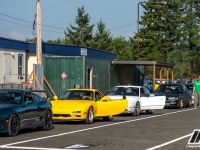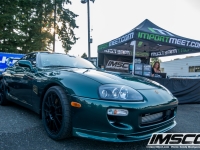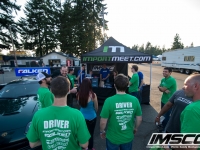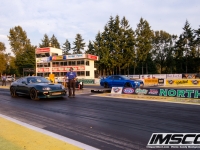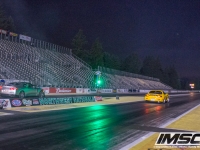The first day of the Import Meet Street Car Competition was broken into two categories: Retail Price and Drag Racing. A quick reference guide for the competitors can be found here.
Photos by Ryan Cutuli, Randy Montgomery, Matt Haugness, and Nick Poirier.
Retail Price
Out of all of the categories in the IMSCC Retail Price was the only one that was decided prior to the competition. The retail price of each car was determined by using their original MSRP with inflation. The same online resource was used for all of the cars with the exception of the Skyline which was never sold in the United States.
The Skyline’s retail price was 6,098,000 Yen based on a Japanese specification sheet found online. This value was converted to US dollars in October 2000 and then input into the inflation calculator.
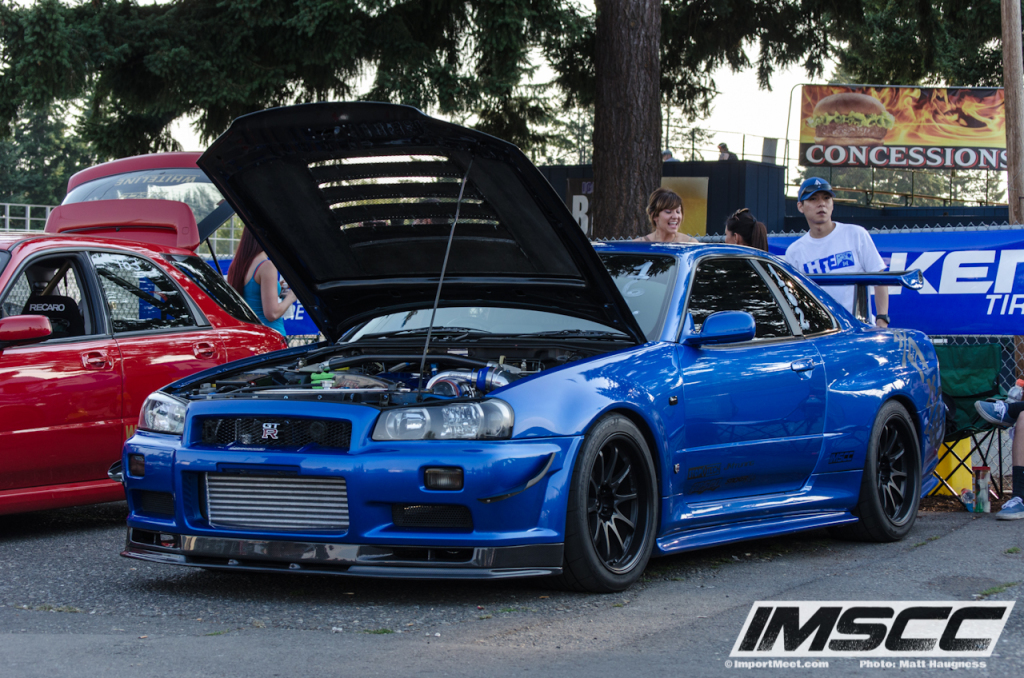
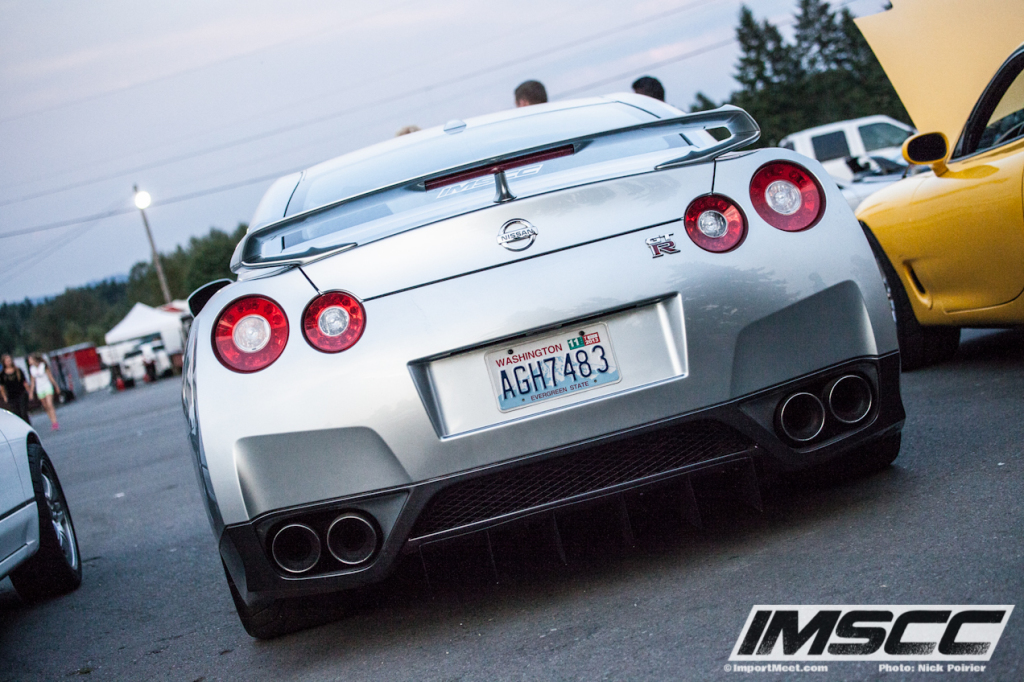 The two most expensive cars were the 2009 Nissan GT-R and the 2000 Nissan Skyline. The R35 GT-R received zero points and the R34 Skyline received 6.7 points. The cars that were impacted the most by inflation were the Mitsubishi Galant VR-4, Nissan 240SX and the Mazda RX-7—all of which nearly doubled in value when converted to 2013 dollars.
The two most expensive cars were the 2009 Nissan GT-R and the 2000 Nissan Skyline. The R35 GT-R received zero points and the R34 Skyline received 6.7 points. The cars that were impacted the most by inflation were the Mitsubishi Galant VR-4, Nissan 240SX and the Mazda RX-7—all of which nearly doubled in value when converted to 2013 dollars.
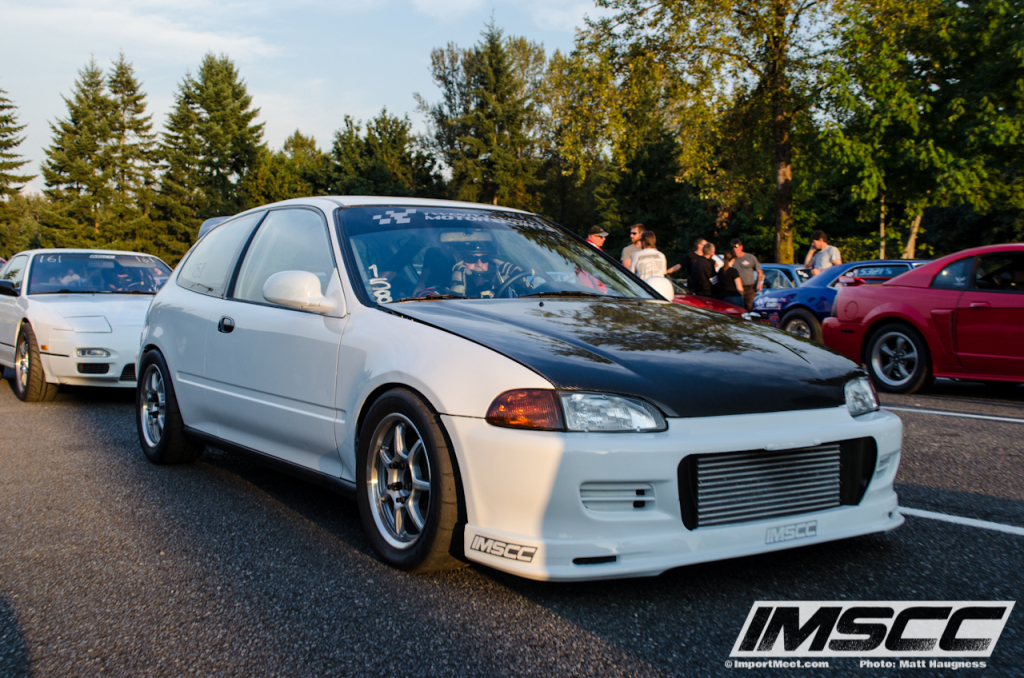 Going into the competition it was obvious that the winner of this category would be the Civic. Back in 1995 a Honda Civic CX could be purchased for the low price of $9,890 ($15,153 with inflation). The Civic received the maximum of 50 points in the Retail Price category.
Going into the competition it was obvious that the winner of this category would be the Civic. Back in 1995 a Honda Civic CX could be purchased for the low price of $9,890 ($15,153 with inflation). The Civic received the maximum of 50 points in the Retail Price category.
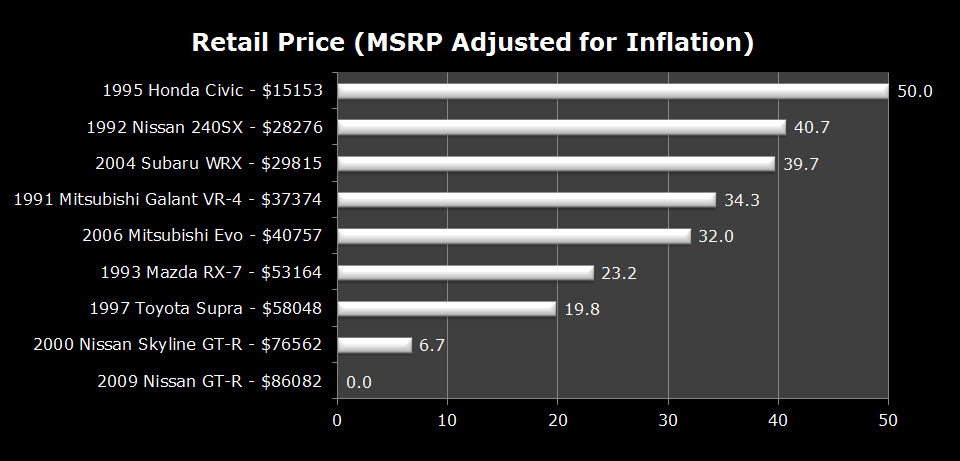 Note: No bonus points were added for this category since the points were determined before the IMSCC started. Click here to read about how the points were determined.
Note: No bonus points were added for this category since the points were determined before the IMSCC started. Click here to read about how the points were determined.
Drag Racing
The drag racing portion of the IMSCC was held on August 9, 2013 at Pacific Raceways in Kent, Washington. The purpose of this category was to determine which car was quicker when driven in a straight line.
Watch Drag Racing Import Cars – IMSCC 2013 on Youtube
All nine competitors arrived at the track around 2 p.m. and parked in a designated IMSCC pit area. Not long after their cars were unloaded, all of them were inspected by two IMSCC staff members. Since the rules stated that each car had to have 100 treadwear tires or higher and that the tires could not be swapped between events, it was critical that they were checked prior to the start. Once each car’s tires were verified, they were allowed to proceed to the track tech inspection area.
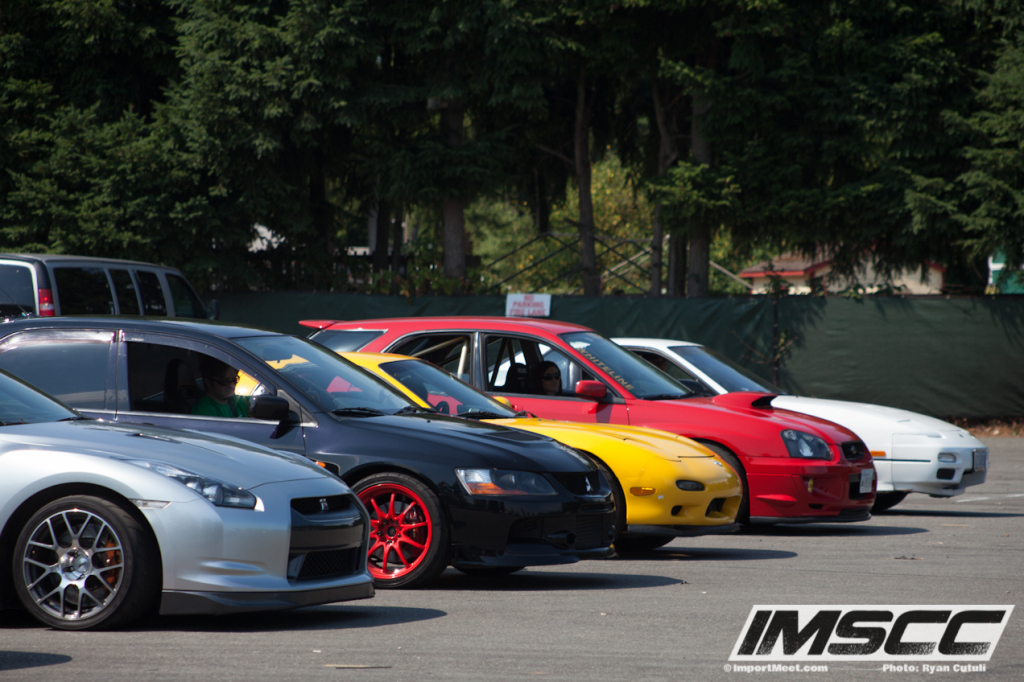 After completing the track tech inspection, the cars returned to the pit area where the drivers prepared for their first race of the night. It was at this time that all of the E85 cars were allowed to add fuel to their tanks. Each competitor that planned on running E85 was required to arrive at the track with less than a quarter of a tank. Only then were they allowed to fill from the controlled source for the remainder of the competition. This eliminated the chance of a competitor bringing race gas to the events (only E85 and pump gas were allowed in the IMSCC). Seaport Petroleum, a valued sponsor of the IMSCC, brought their mobile filling station to each portion of the competition to keep all three of the E85 cars topped off.
After completing the track tech inspection, the cars returned to the pit area where the drivers prepared for their first race of the night. It was at this time that all of the E85 cars were allowed to add fuel to their tanks. Each competitor that planned on running E85 was required to arrive at the track with less than a quarter of a tank. Only then were they allowed to fill from the controlled source for the remainder of the competition. This eliminated the chance of a competitor bringing race gas to the events (only E85 and pump gas were allowed in the IMSCC). Seaport Petroleum, a valued sponsor of the IMSCC, brought their mobile filling station to each portion of the competition to keep all three of the E85 cars topped off.
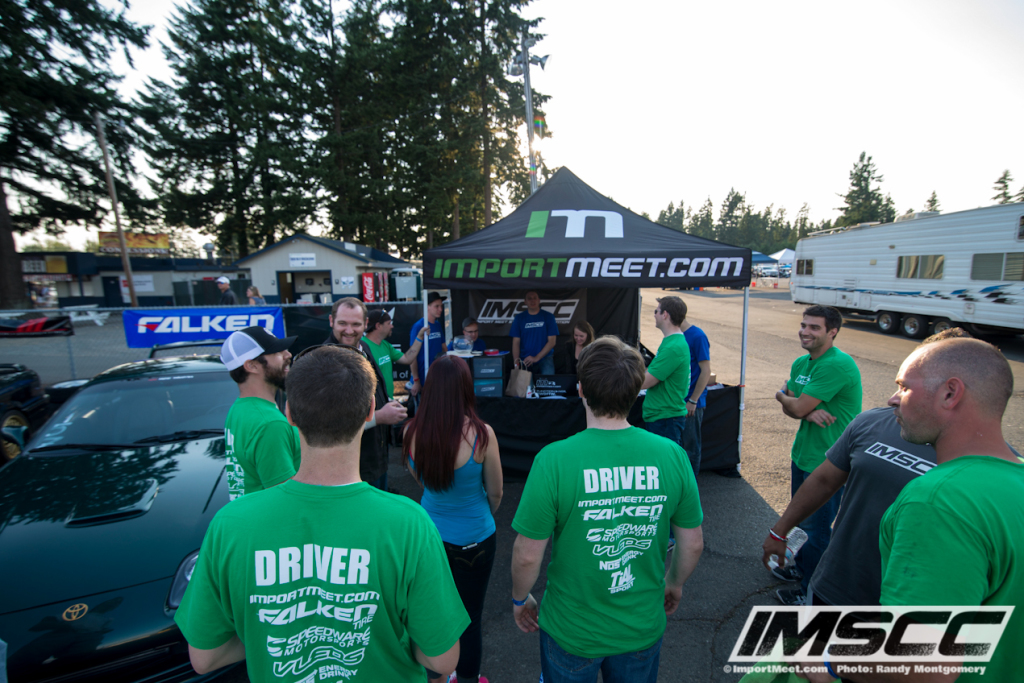
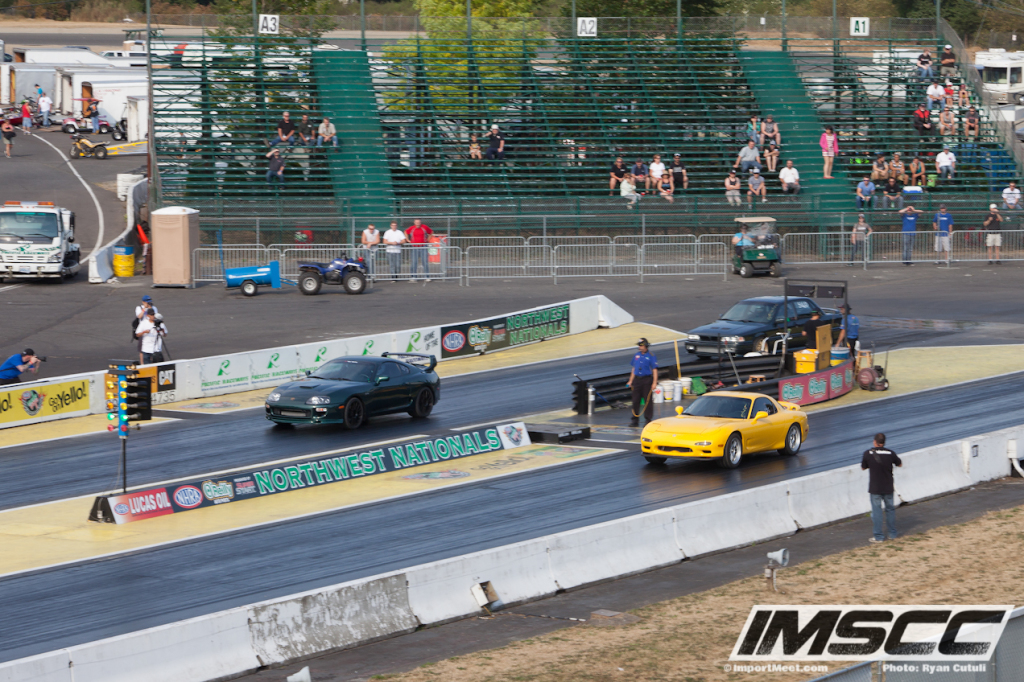 The first pair of cars to the starting line was Matt Korthuis in his Mazda RX-7 and Marshall Hagen (Stu Hagen’s son) in the Toyota Supra. Matt did a long burnout to heat up his drag radials and it ended up making a big difference. Once the lights reached the bottom of the tree Matt had a near perfect launch (1.65 60’) which allowed him to get an 11.352 E.T. Marshall immediately lost traction and instead of pushing the car he decided to save it for later in the evening. On Marshall’s final run he managed to get a decent launch in the Supra which earned him an 11.892 time slip.
The first pair of cars to the starting line was Matt Korthuis in his Mazda RX-7 and Marshall Hagen (Stu Hagen’s son) in the Toyota Supra. Matt did a long burnout to heat up his drag radials and it ended up making a big difference. Once the lights reached the bottom of the tree Matt had a near perfect launch (1.65 60’) which allowed him to get an 11.352 E.T. Marshall immediately lost traction and instead of pushing the car he decided to save it for later in the evening. On Marshall’s final run he managed to get a decent launch in the Supra which earned him an 11.892 time slip.
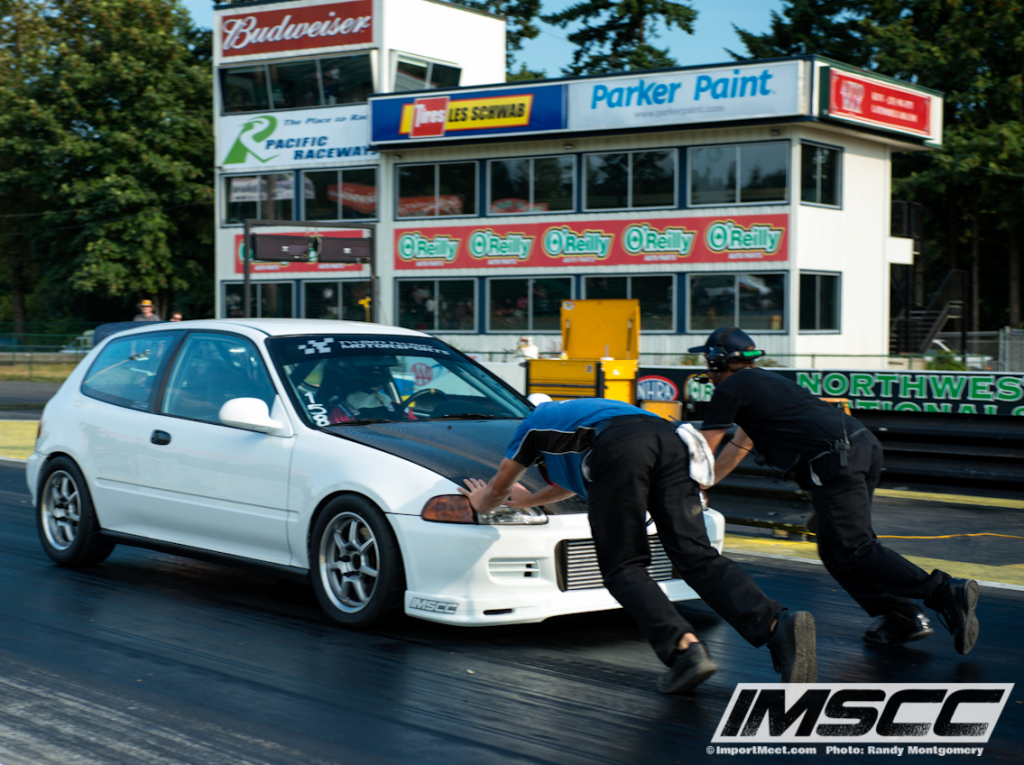 Only one car of the nine cars had serious issues. Brand new tires coupled with fresh VHT proved to be too much for Guillaume Marceau’s Honda Civic. On his first launch he sheared the passenger axle and his car had to be pushed back to the pits. Guillaume came to the track prepared and swapped in a fresh OEM axle in about 20 minutes. He brought the car back to the line the second time around and rather than pushing it he took it easy off the line. Without launching he still managed to run an 11.79. Unfortunately this was his only run of the night since he broke the other axle on his third launch. Had he not made the one clean pass he would have received a DNF for this event (zero points).
Only one car of the nine cars had serious issues. Brand new tires coupled with fresh VHT proved to be too much for Guillaume Marceau’s Honda Civic. On his first launch he sheared the passenger axle and his car had to be pushed back to the pits. Guillaume came to the track prepared and swapped in a fresh OEM axle in about 20 minutes. He brought the car back to the line the second time around and rather than pushing it he took it easy off the line. Without launching he still managed to run an 11.79. Unfortunately this was his only run of the night since he broke the other axle on his third launch. Had he not made the one clean pass he would have received a DNF for this event (zero points).
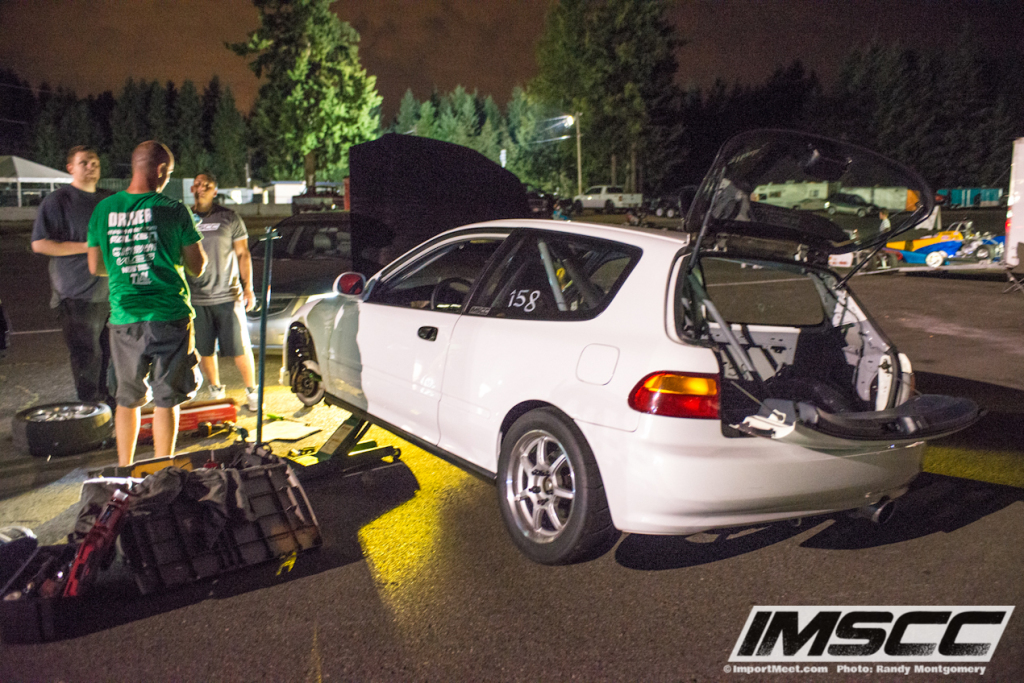 One of the more exciting matchups was between Jake Montgomery in the R34 Skyline and Quentin Christensen in the R35 GT-R. Jake launched the Skyline fairly well but the R35 GT-R overtook him midway down the track and ended with a time of 10.948. Quentin’s R35 GT-R ended up being the most consistent car of the night and on his third run he beat his best time with a 10.939.
One of the more exciting matchups was between Jake Montgomery in the R34 Skyline and Quentin Christensen in the R35 GT-R. Jake launched the Skyline fairly well but the R35 GT-R overtook him midway down the track and ended with a time of 10.948. Quentin’s R35 GT-R ended up being the most consistent car of the night and on his third run he beat his best time with a 10.939.
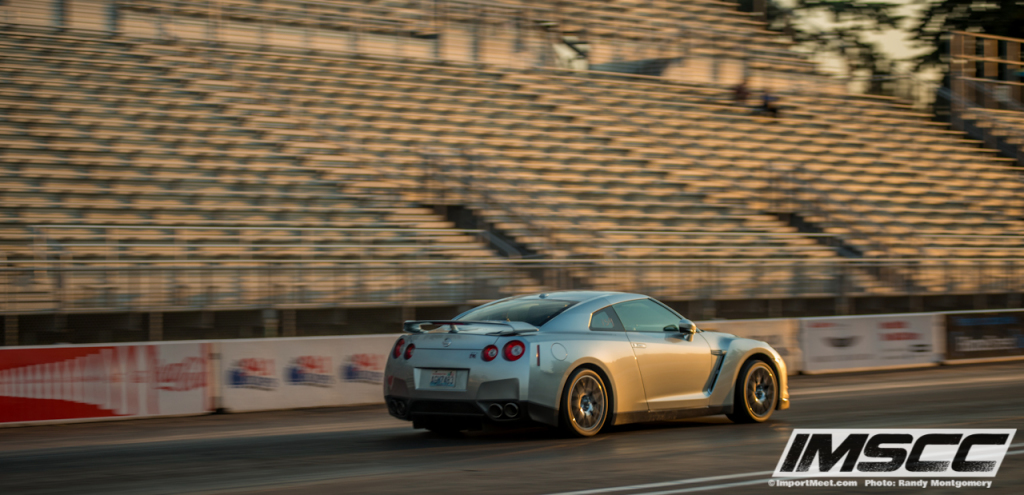 On his third and final run in the R34 Skyline Jake had his best launch of the night which allowed him to run a 10.747. This was the fastest time of the night and the R34 Skyline received the maximum 110 points for the category.
On his third and final run in the R34 Skyline Jake had his best launch of the night which allowed him to run a 10.747. This was the fastest time of the night and the R34 Skyline received the maximum 110 points for the category.
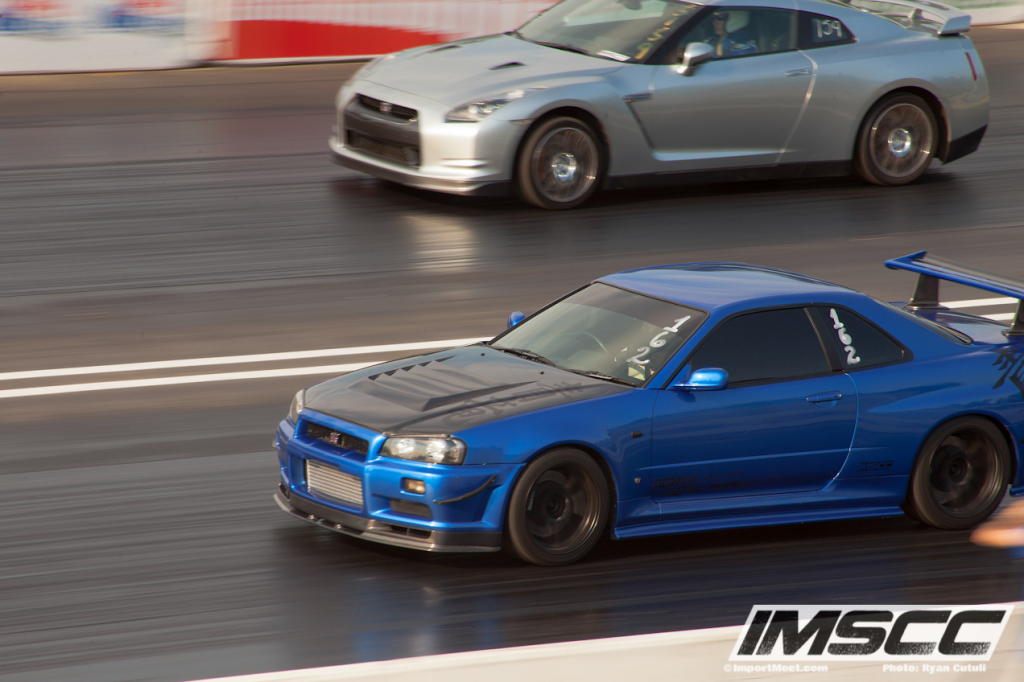 Mark in the Galant VR-4 and Steve in the 240SX both performed well, but had a hard time getting into the 11’s with the tires they arrived on. Nathan and his Evo were also having issues that were most likely caused by his recent swap back to the stock Evo IX turbocharger. Despite the lower power numbers on his Evo, he still managed to get a 12.302.
Mark in the Galant VR-4 and Steve in the 240SX both performed well, but had a hard time getting into the 11’s with the tires they arrived on. Nathan and his Evo were also having issues that were most likely caused by his recent swap back to the stock Evo IX turbocharger. Despite the lower power numbers on his Evo, he still managed to get a 12.302.
After the third set of runs most of the drivers decided to stick with their current best rather than risk breaking something so late in the night. The Supra, WRX, Evo and Galant all decided to go for a fourth and final pass.
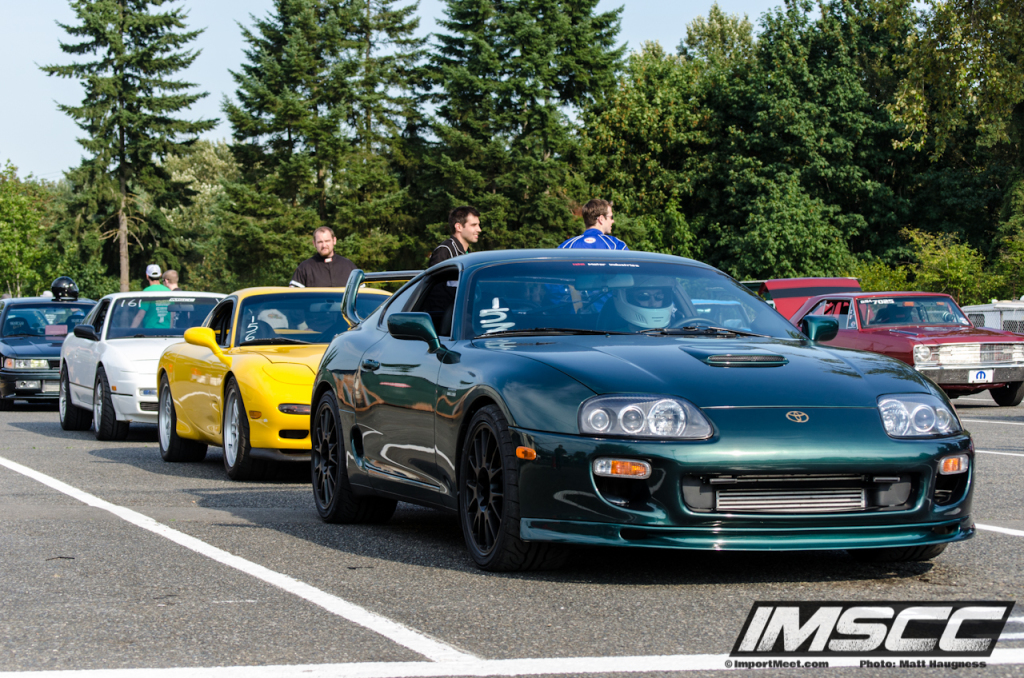
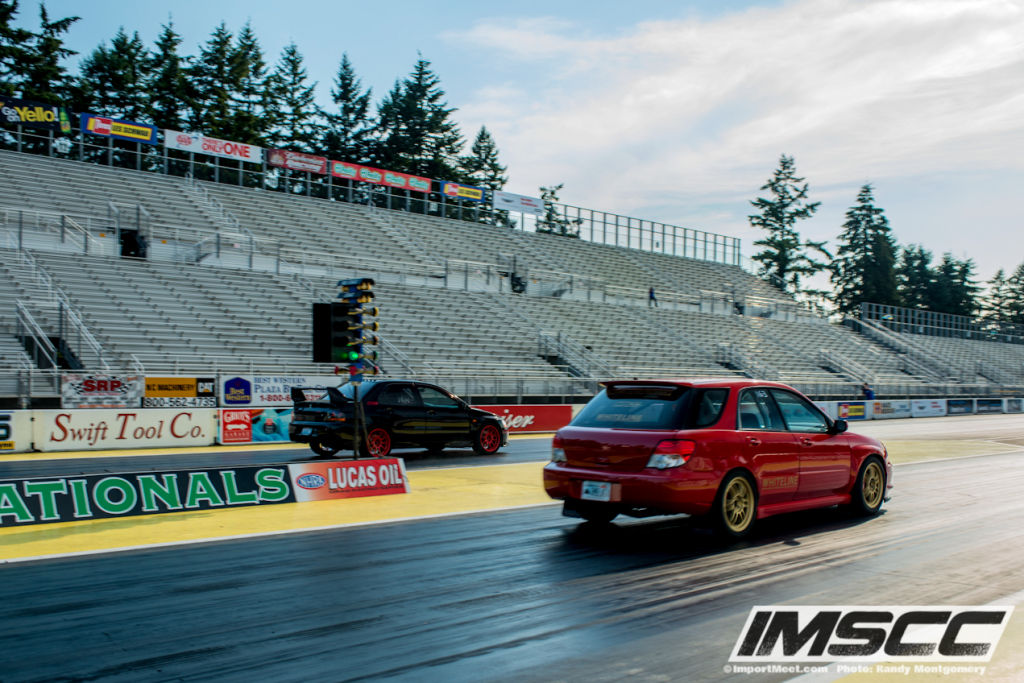 Going into the final runs the slowest E.T. of the night was Katie Smith in her 2004 Subaru WRX. This was her first time drag racing and she went into the drag racing portion planning on taking it easy on the clutch. Up until her last run her best time of the night was a 15.306. Before the final staging she was informed that if she managed to beat her previous time that it would bring down the points of all of her competitors. Once she was aware of this she was determined to push herself and the car that much further.
Going into the final runs the slowest E.T. of the night was Katie Smith in her 2004 Subaru WRX. This was her first time drag racing and she went into the drag racing portion planning on taking it easy on the clutch. Up until her last run her best time of the night was a 15.306. Before the final staging she was informed that if she managed to beat her previous time that it would bring down the points of all of her competitors. Once she was aware of this she was determined to push herself and the car that much further.
She was successful and beat her previous time by 0.3 seconds with a final E.T. of 15.014. This small improvement changed the slope of the line used to determine the points for the remaining competitors. This lowered the final points of nearly all of her competitors by about two (except the R34 Skyline).
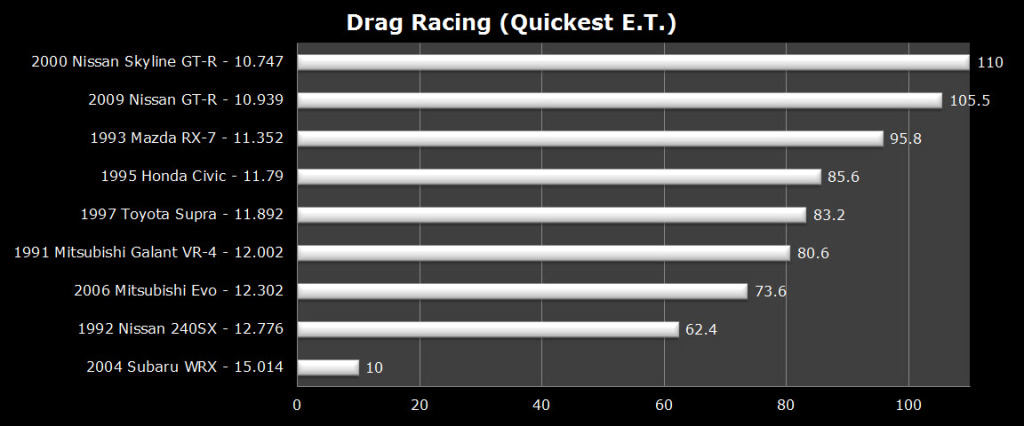 Click here to read about how the points were determined.
Click here to read about how the points were determined.
Overall Points – End of Day One
Guillaume Marceau remained in first place at the end of the day one even though he spent most of the night replacing axles on his 1995 Honda Civic. In second place was Matt Korthuis with his LS1 swapped 1993 Mazda RX-7, and third place was John Pennell with his 2000 Nissan Skyline GT-R.
Katie Smith (2004 Subaru WRX) moved to last place after her 10 point finish during the drag racing portion.
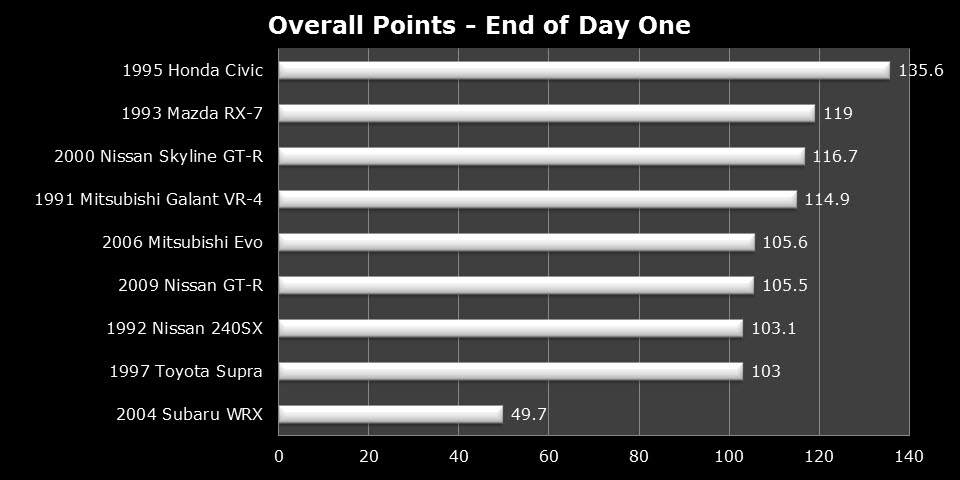 Next IMSCC Results:
Next IMSCC Results:
Day Two: Peak Horsepower, Power Delivery & Ride Quality

